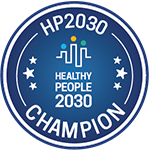Listening to weather reports can sometimes bring a flood of new terms you have never heard before. When dangerous storms approach the area, it is important to know what meteorologists mean.
Familiarize yourself with these terms to help identify a hurricane hazard:
Tropical Cyclone: A warm-core non-frontal synoptic-scale cyclone, originating over tropical or subtropical waters, with organized deep convection and a closed surface wind circulation about a well-defined center. Once formed, a tropical cyclone is maintained by the extraction of heat energy from the ocean at high temperature and heat export at the low temperatures of the upper troposphere.
Tropical Depression: A tropical cyclone in which the maximum sustained surface wind speed (using the U.S. 1-minute average) is 38 mph (33 knot) or less.
Tropical Storm: A tropical cyclone in which the maximum sustained surface wind speed (using the U.S. 1-minute average) ranges from 39 mph (34 knots) to 73 mph (63 knots).
Hurricane: A tropical cyclone in which the maximum sustained surface wind (using the U.S. 1-minute average) is 74 mph (64 knots) or more.
Storm Surge: An abnormal rise in sea level accompanying a hurricane or other intense storm, and whose height is the difference between the observed level of the sea surface and the level that would have occurred in the absence of the cyclone. Storm surge is usually estimated by subtracting the normal or astronomic high tide from the observed storm tide. Storm surge can reach heights well over 20 feet and can span hundreds of miles of coastline.
Storm Tide: The actual level of sea water resulting from the astronomic tide combined with the storm surge.
Hurricane Warning: An announcement that hurricane conditions (sustained winds of 74 mph or higher) are expected somewhere within the specified area. Because hurricane preparedness activities become difficult once winds reach tropical storm force, the hurricane warning is issued 36 hours in advance of the anticipated onset of tropical-storm-force winds.
Hurricane Watch: An announcement that hurricane conditions (sustained winds of 74 mph or higher) are possible within the specified area. Because hurricane preparedness activities become difficult once winds reach tropical storm force, the hurricane watch is issued 48 hours in advance of the anticipated onset of tropical-storm-force winds.
Tropical Storm Warning: An announcement that tropical storm conditions (sustained winds of 39 to 73 mph) are expected somewhere within the specified area within 36 hours.
Tropical Storm Watch: An announcement that tropical storm conditions (sustained winds of 39 to 73 mph) are possible within the specified area within 48 hours.
Short Term Watches and Warnings: These watches/warnings provide detailed information about specific hurricane threats, such as flash floods and tornadoes.


